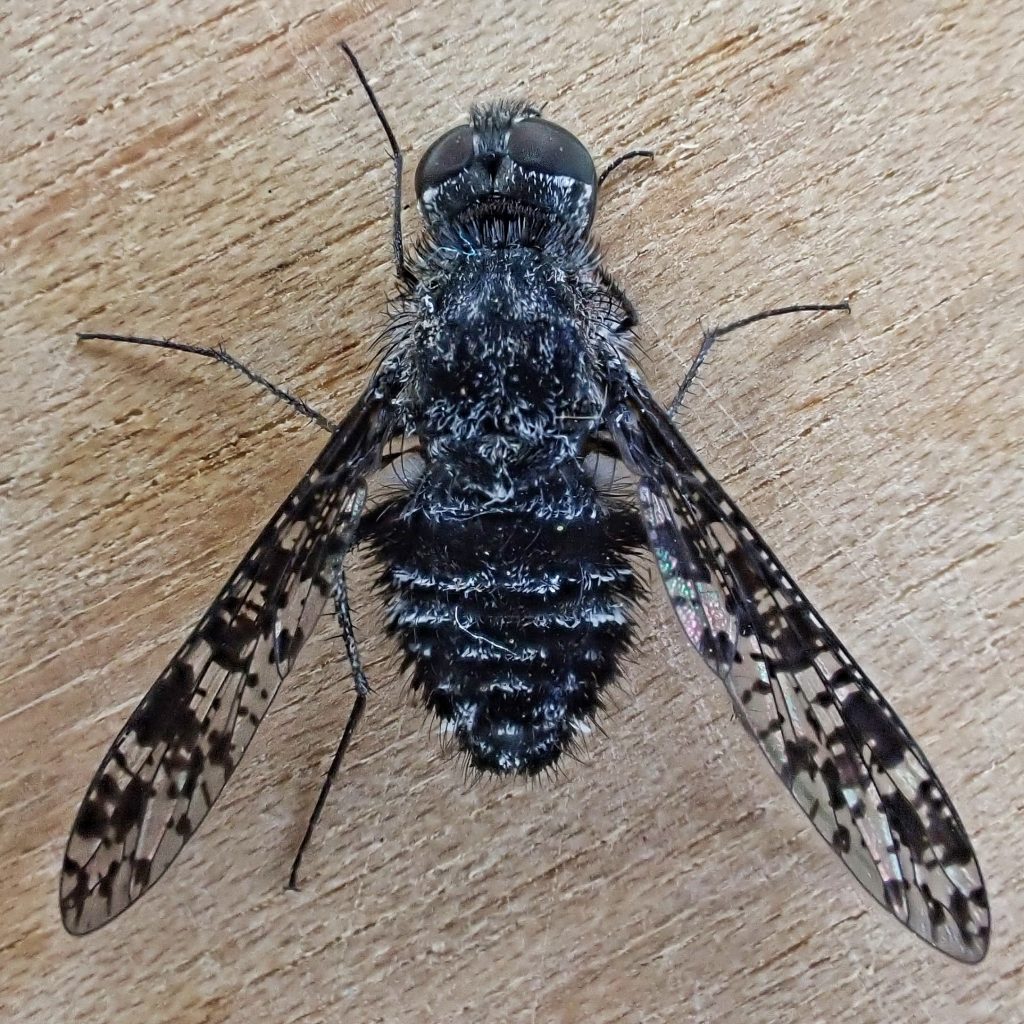
This is the other cool bug I found a few days ago based on Craig Sondergaard’s tip. I only got one decent in situ photo because they are tiny, quick, and kinda spooky, but I did manage to net one that posed well after a bit of refrigeration. These members of the family Bombyliidae (bee flies; and it is proper to separate the 2 words because they are, in fact, flies in the order Diptera) are parasitoids (meaning their larva parasitize some other species) of various bees and wasps, some of which are also parasitoids (like the other very interesting bug I found that day, the Isodontia elegans that I recently profiled), making Anthrax irroratus an occasional hyperparasite. Anthrax sp. in general flip their eggs into nest sites of the host, but they aren’t particularly vigilant about making sure it’s an actual nest, and have been known to flick eggs onto dark spots on an observers clothing.
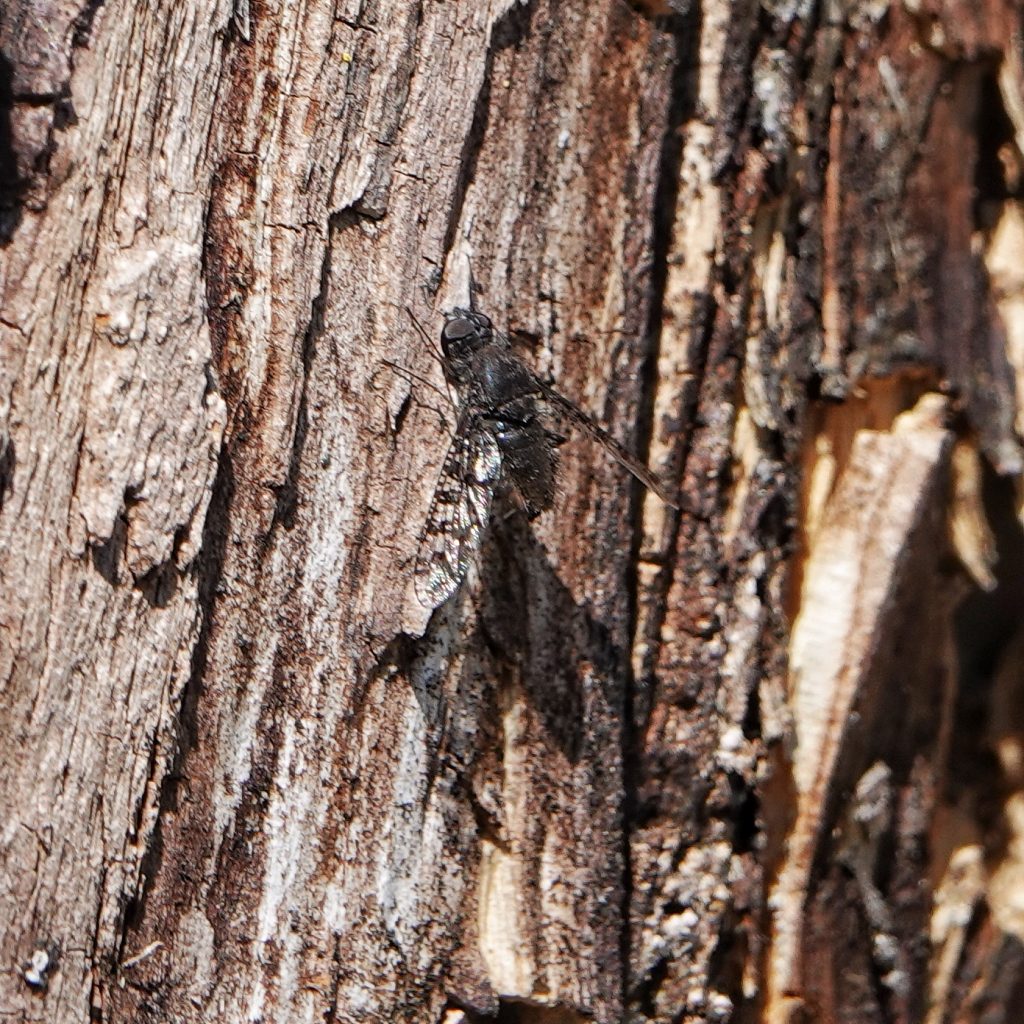
Description– Small (5-10mm), dark, fuzzy bee fly with heavily marked wings; wings are speckled as well as having large black blotches; thorax has intermittent white scales, and abdomen often has transverse lines of white scales.
Similar species–Anthrax cascadensis, A. aureosquamosus, A. melanopogon, and A. varicolor lack tiny speckles, and have less, and less amorphous, black splotches on their wings.
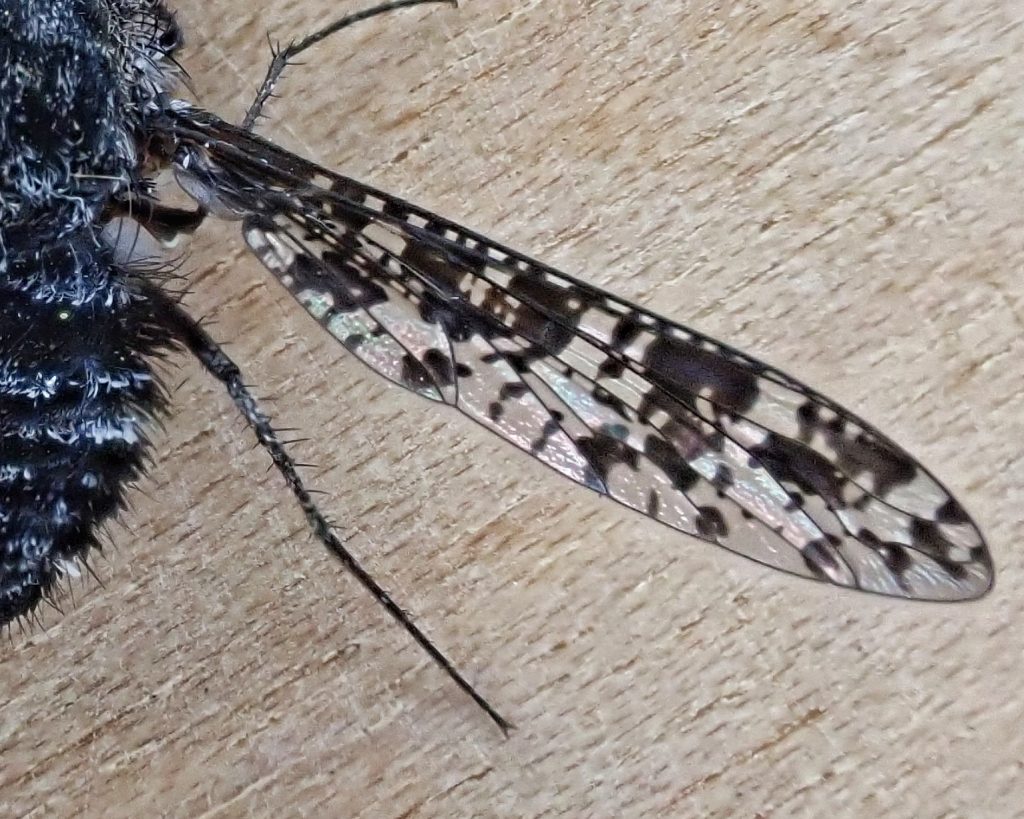
Habitat-Wherever it can find larval hosts, and because of their wide range of hosts they can be almost anywhere.
Range-Northern North America; region wide in the PNW.
Eats-adults do not feed; larvae are hyperparasites of various wasps (including Isodontia elegans) and bees.
Eaten by-Probably insectivores of all classes
Adults active-May-September
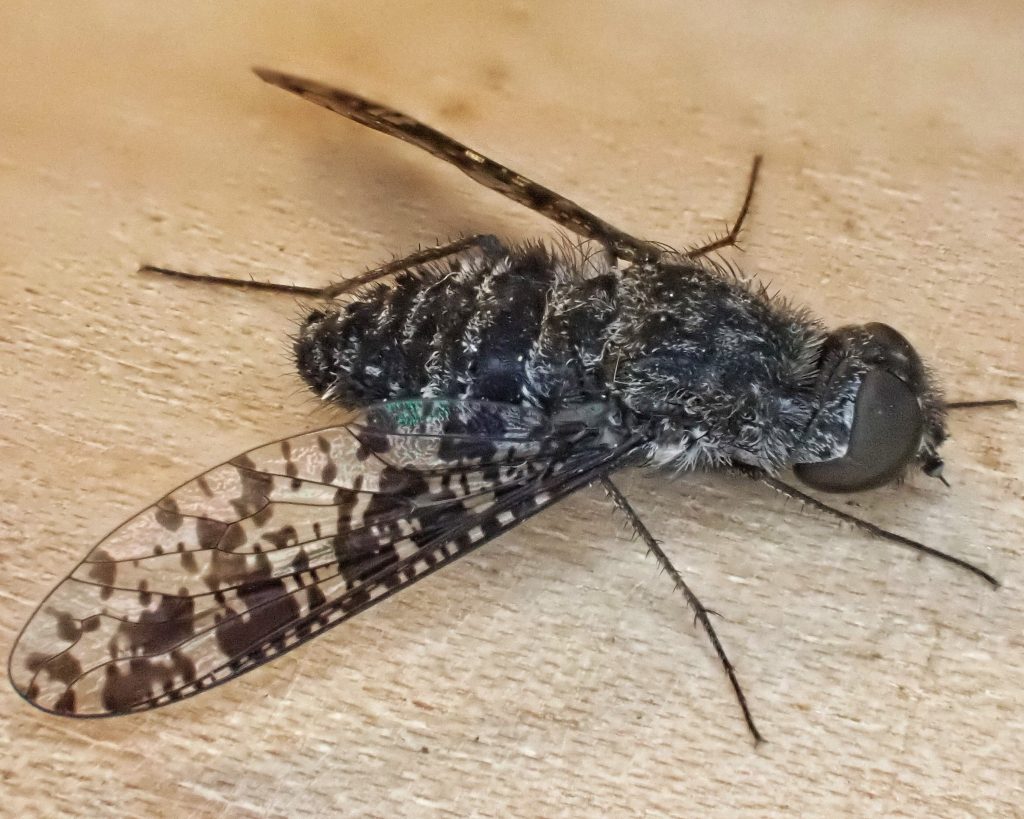
Life cycle-Females fling eggs into the nests of various Hymenoptera, frequently targeting wood, ground and bank nesting wasps and bees; when the eggs hatch they prey on the larvae of the host; apparently the larvae are endoparasitic, meaning they consume the host larvae from the outside in; may overwinter as a 1st instar if host larvae are consumed slowly, or may overwinter as pupa; complete development the following spring, and emerge shortly after the surviving hosts leave the nest.
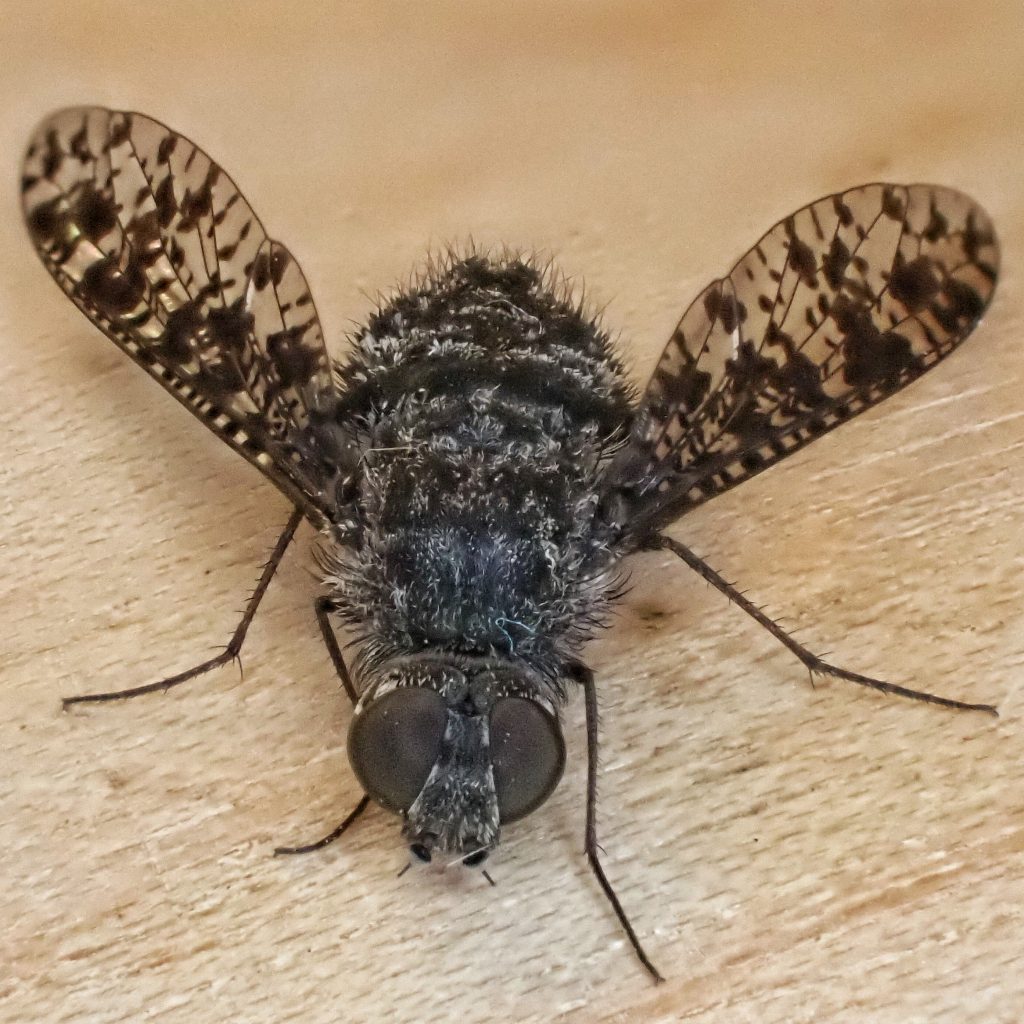
Etymology of names–Anthrax is from the Greek word for ‘coal’, and presumably refers to the dark black head and thorax of many members of the genus. The specific epithet irroratus is from the Latin word for ‘moistened with dew’, but according to Jaeger’s sourcebook of biological names and terms it is ‘…sometimes erroneously used to mean freckled or mottled’, which is obviously it’s usage here, in reference to the heavily speckled wings, although all of the bee flies in Anthrax have speckled wings. But irroratus has the most heavily speckled wings.
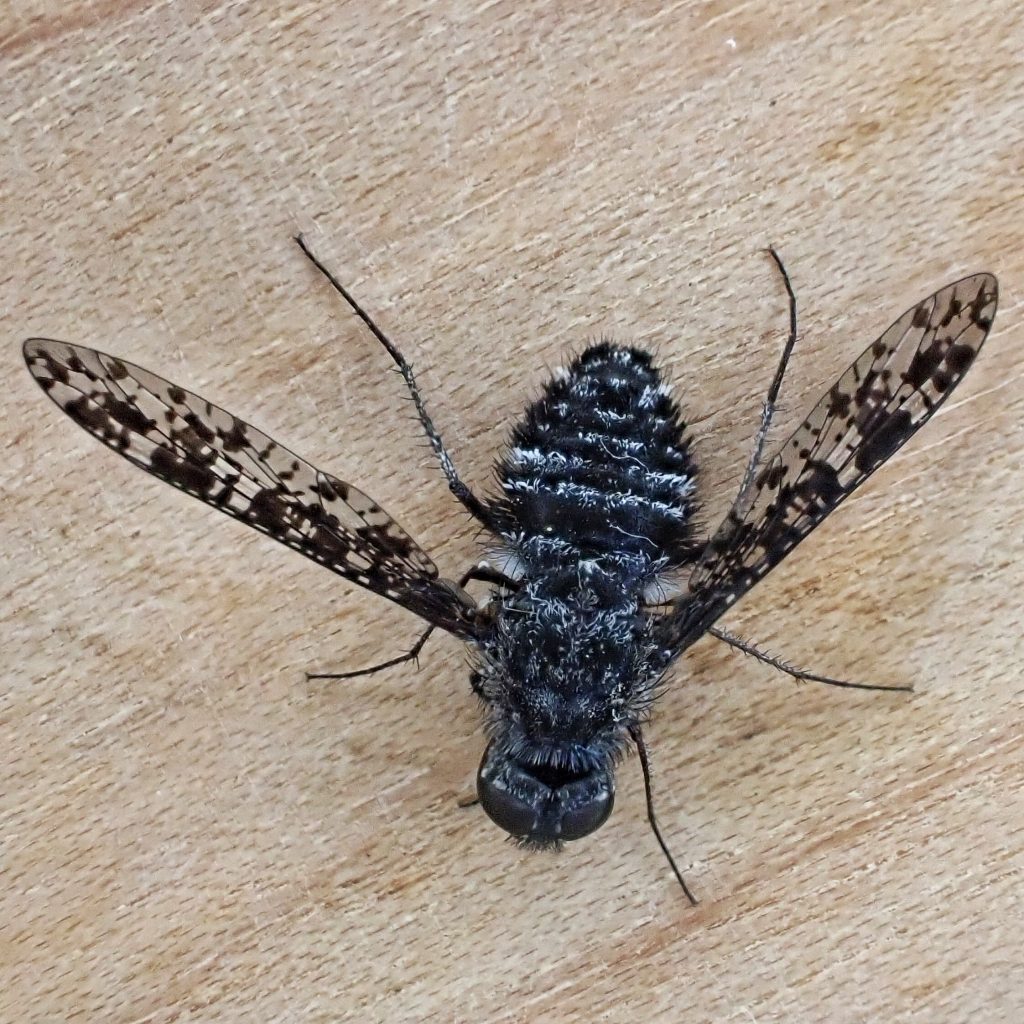
https://bugguide.net/node/view/6582
https://www.jstor.org/stable/25085388
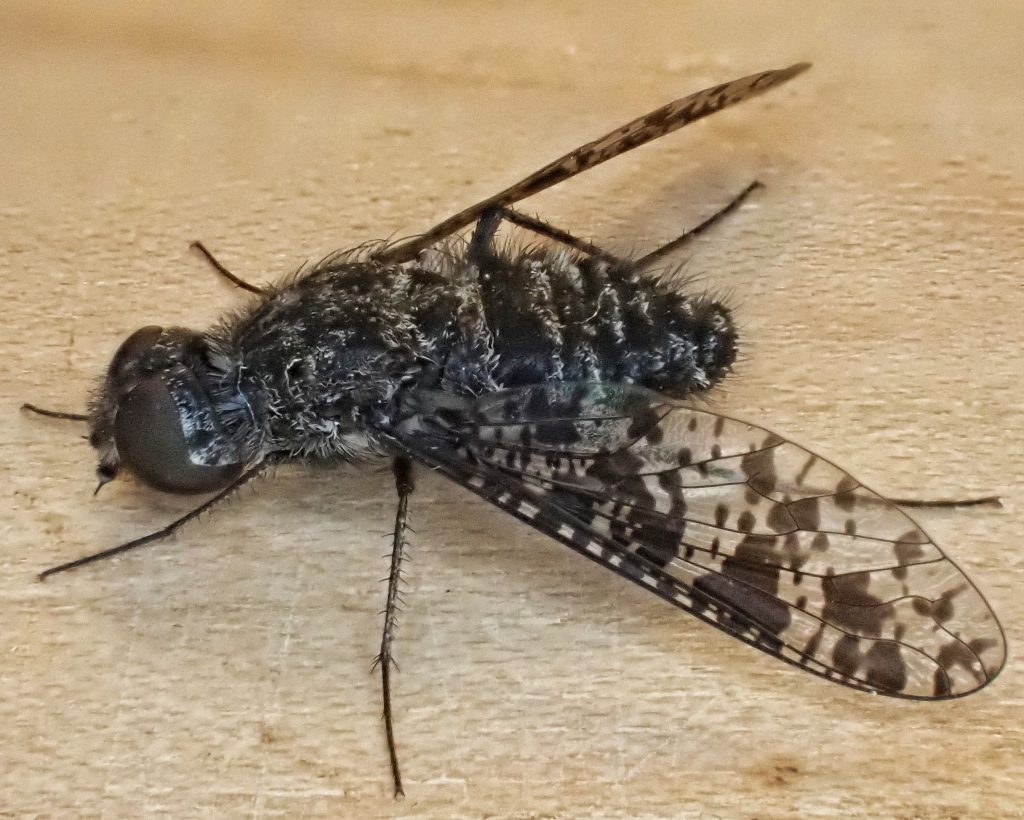
1 thought on “Anthrax irroratus”